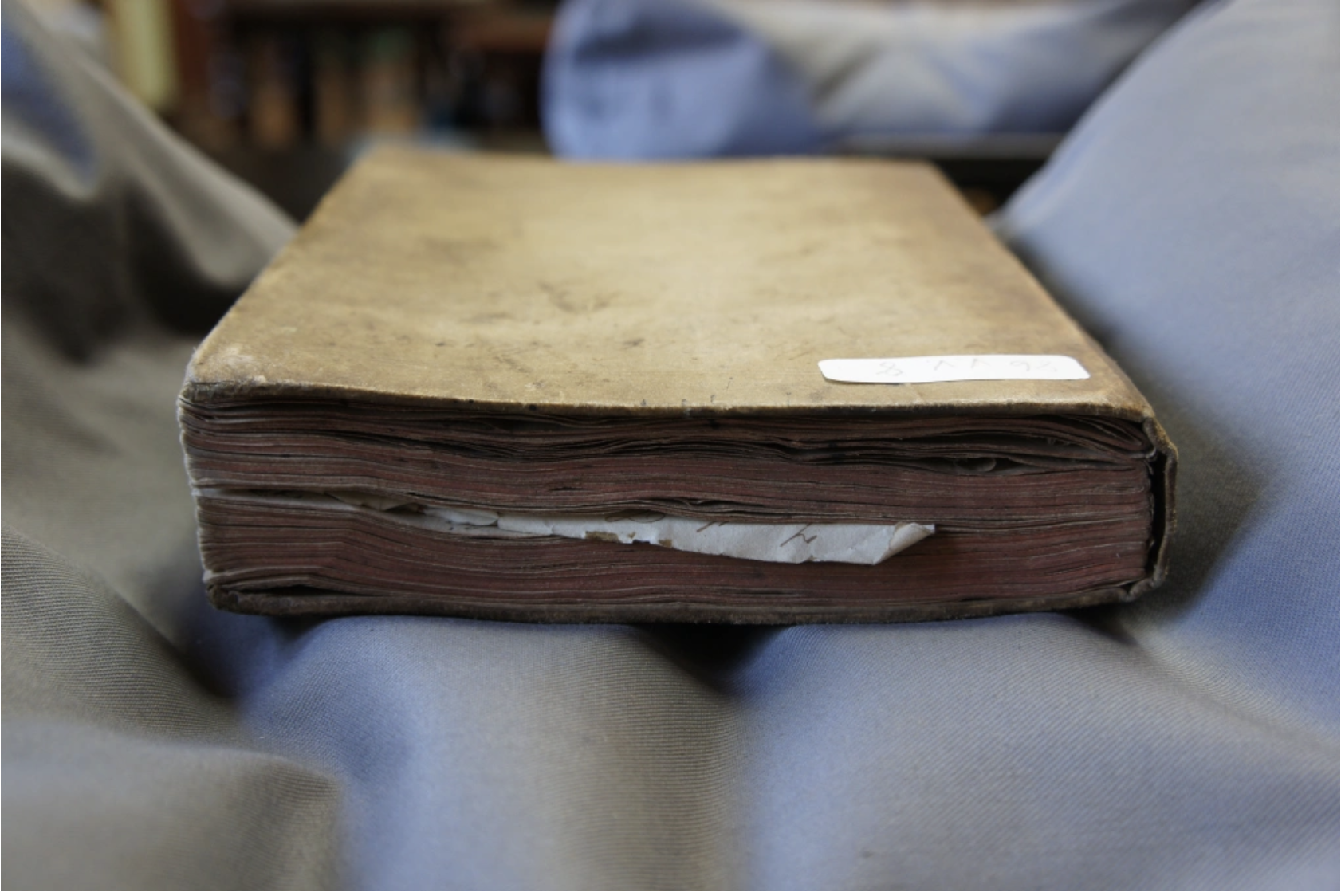Making RB11
Making RB11, is based on my dissertation, Design in Early Modern Materials, London 1797-1828, History of Design postgraduate program, at the Royal College of Art/V&A Museum. As a case study, I applied my research methodology towards the analysis of an archival manuscript called MSL/1983/1 from the V&A National Art Library collection.
The history of design dissertation is experimental with the interests to bridge the gap between theoretical & practical knowledge for artechnē (artist materials & technology) by defining design when making artisanal materials.
MSL/1983/1, National Art Library, V&A, UK. (2018) Photo by Susan Harris.
MSL/1983/1, is a brilliant manuscript that illustrates true artisan epistemology of material knowledge recorded by copying recipes, documenting successful recipes & experimentations of metals and precipitations. These various recipes found within the manuscript are paint of various binders, coloured glass, frits, enamels, oil varnishes, lacquers, waterproof leather stains and medicinal recipes.
The recipe book belonged to Thomas Gray, whose profession was an established Coach Painter & Glass Painter in London on Grey's Inn Lane, had his own workshop & apartment across the Blue Lion. London Company Apprenticeship Registers' document he trained with the renowned Thomas Maxfield of Lincoln's Inn Fields, a Master Painter Stainer & much sought after who also trained Royal Academy members Charles Catton, John Baker & the son of Christopher Pinchbeck, who invented a metal alloy that resembles gold.
Folio 1, MSL/1983/1, National Art Library, V&A, UK. (2018) Photo by Susan Harris.
This manuscript is an excellent example documenting England in the late 18th century, transitioning from the early modern to modern world thereby reflecting the shift of apprenticeship systems to arts education, great insight into the coach painting material knowledge and industry production, good taste becomes good design and the impact of published books during the experimenting culture.
Making RB11refers to the fourth recipe on page 11, as this was the first successful recipe, indicated with the signature 'T Gray'. RB11 is a cobalt frit recipe, which was likely used as an enamel for glass painting.
RB11 (recipe book folio 11), MSL/1983/1, National Art Library, V&A, UK. (2018) Photo by Eva-Maria Spampinato.
While MSL/1983/1 documents artisan epistemology & material knowledge from the past, so did Making RB11. Re-making the historical recipe was a collaboration with designer Celia Dawson, glass artists Laura McKinley, & Liam Reeves, & courtesy with Stoke-on-Trent James Kent Group.
Documented in the video, the cross-disciplinary group demonstrates different levels of expert material knowledge when focused on the material properties and physical changes while Making RB11 using cobalt oxide, smalts and borax.
The Experiment
A Design Historian Making RB11, an 18th-century cobalt frit recipe.
(2018)
For more information about this project, please contact me



